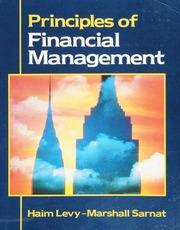Capital Budgeting Team Chapter Assignment Webmasters.com has developed a powerful new server that would be used for corporations' Internet activities. It would cost $9 million at Year 0 to buy the equipment necessary to manufacture the server. The project would require net working capital at the beginning of each year in an amount equal to 11% of the next year's projected sales; for example, NWC = 11% (Sales). The servers would sell for $25,000 per unit, and Webmasters believes that variable costs would amount to $18,000 per unit. After Year 1, the sales price and variable costs will increase at the inflation rate of 2%. The company's non- variable (fixed) costs would be $1.2 million at Year 1 and would also increase annually with inflation. The server project would have a life of 4 years. If the project is undertaken, it must be continued for the entire 4 years. The firm believes it could sell 1,200 units per year. The equipment would be depreciated over a 5-year MACRS depreciation schedule. The estimated market value of the equipment at the end of the project's 4-year life is $550.000. Webmasters' federal-plus-state tax rate is 21%. Its cost of capital is 9% for average-risk projects. Low-risk projects are evaluated with a WACC of 8%, and high-risk projects at 10%. 1. Should the firm invest in this project if the cash flows are uncertain (high risk)? 2. What is the maximum WACC that would permit investment in the project? 3. Are there additional potential value drivers missing from the analysis that could change the investment decision (consider MVA and the variables that drive value)? Steps for capital budgeting: 1. Estimate project operating profitability (EBIT) 2. Subtract any opportunity costs or cannibalized sales 3. Estimate taxes 4. Add back depreciation (which is not a cash flow) to find operating cash flow 5. Calculate tax on any salvage value at the end of the project 6. Calculate changes in net operating working capital over the life of the project 7. Calculate initial investments required invoice, delivery, installation, etc.) 8. Find free cash flow for each year of the project 9. Evaluate economic profitability and return (NPV, IRR, MIRR, Discounted Payback, etc.) 10. Answer the three questions regarding the project listed above. Project cash flows: Year 0 Year 1 Year 2 Year 3 Year 4 Free Cash Flow Project Decision Criteria Calculations (NPV, IRR, etc.)








